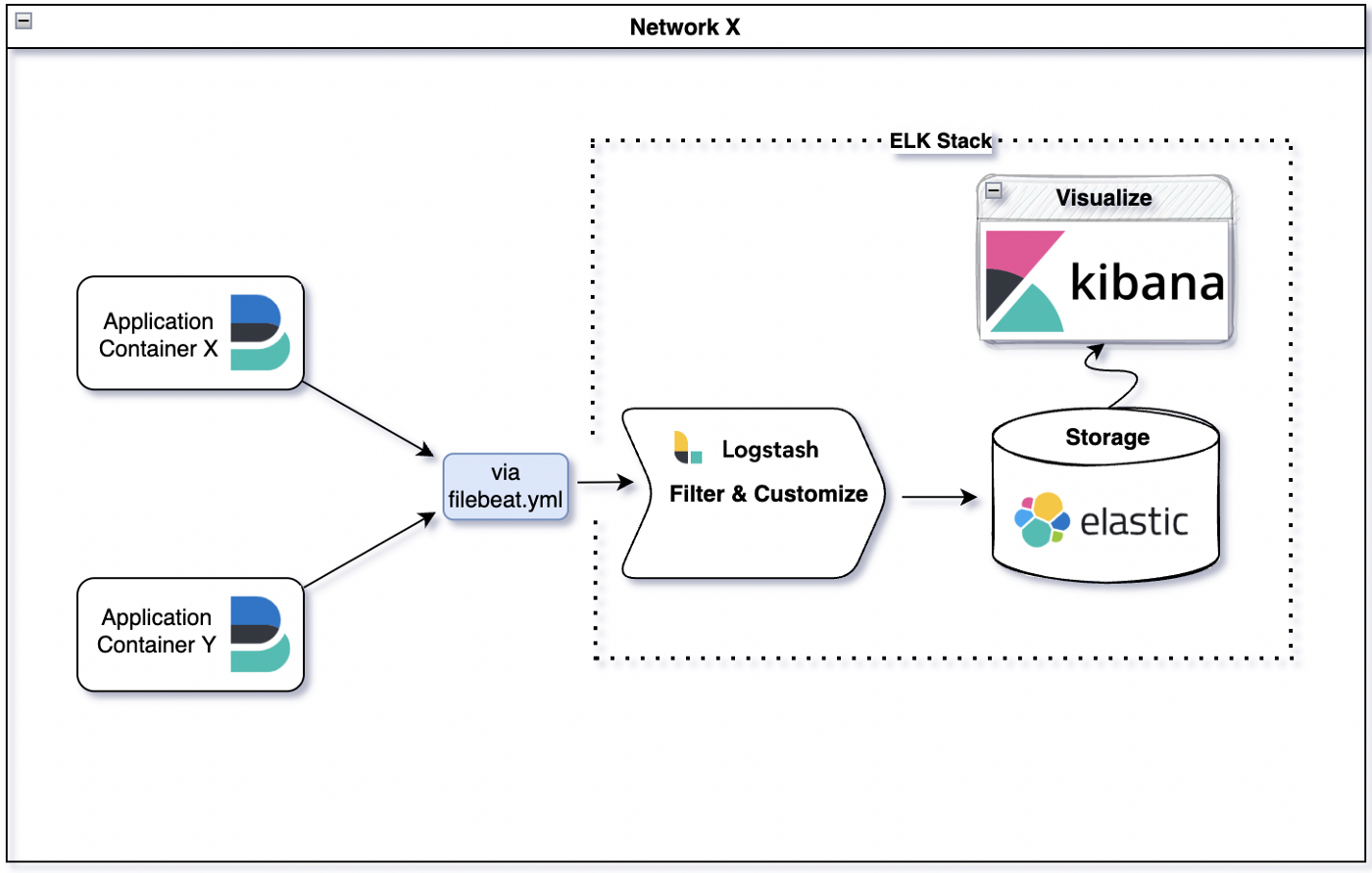Separated Logging with Filebeat and ELK stack
Separated Logging with Filebeat and ELK stack
By Ali Göktaş
2 min read
Why do we need separate to our logging mechanism in microservice architecture?

- Authors

- Name
- Ali Göktaş
Why do we need separate to our logging mechanism in microservice architecture?
You have to make sure if you need it. Yes, you can use it if you want to manage your logs at one point and you don’t want to do HTTP requests for each log line.

Architechtural Diagram
What are the benefits of this architecture?
- Filebeat can listen to all microservices that in same network.
- Filebeat ships the collected logs as a stream. So it increases the productivity of data transfer.
- You don’t need do new implementations. When you add new component into the docker-compose.yml, it will work for the component too.
- Elasticsearch is one of the most usable database for huge data storing.
- You can monitor metrics and graphics on Kibana.
Filebeat is listening to all containers that are implemented and send to ELK stack. You can configure it via filebeat.yml file.
filebeat.autodiscover:
providers:
- type: docker
hints.enabled: true
output.logstash:
hosts: ["logstash:5000"]
logging.level: error
According to the above filebeat.yml file, the consumed logs are sending to logstash. If you don’t want to use Logstash for filtering, you can write “elasticsearch” as output.
output.elasticseach:
hosts: ["elasticsearch:5000"]
So, What kind of docker-compose.yml file you need ?
version: '3.1'
services:
X-service:
build: ./X-service
ports:
- "8080:8080"
logstash:
container_name: logstash
image: logstash:7.5.0
volumes:
- ./logstash.conf:/usr/share/logstash/pipeline/logstash.conf
- ./logstash.template.json:/usr/share/logstash/templates/logstash.template.json
ports:
- 5044:5044
depends_on:
- elasticsearch
stdin_open: true
logging:
driver: "json-file"
options:
max-size: "10m"
max-file: "50"
elasticsearch:
image: elasticsearch:8.0.1
volumes:
- elasticsearch:/usr/share/elasticsearch/data:z
ports:
- "9200:9200"
environment:
ES_JAVA_OPTS: -Xmx256m -Xms256m
discovery.type: single-node
xpack.security.enabled: false
logger.level: ERROR
kibana:
image: kibana:8.0.1
ports:
- "5601:5601"
filebeat:
image: elastic/filebeat:8.0.1
user: root
volumes:
- ./filebeat/config/filebeat.yml:/usr/share/filebeat/filebeat.yml:ro
- type: bind
source: /var/lib/docker/containers
target: /var/lib/docker/containers
read_only: true
- type: bind
source: /var/run/docker.sock
target: /var/run/docker.sock
read_only: true depends_on:
- logstash
Volume paths and configs can be symbolic in the above code blocks. You can customize them according to your design. Also, you need to add volumes for components that are required.
Poorly designed code usually takes more code to do the same things, often because the code quite literally does the same thing in several places.
Martin Fowler
Thanks for your time!